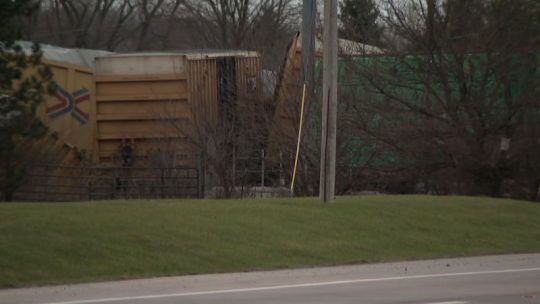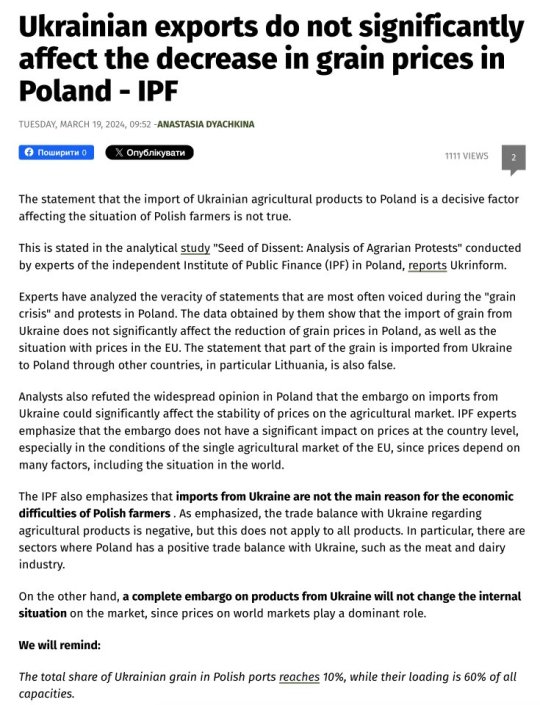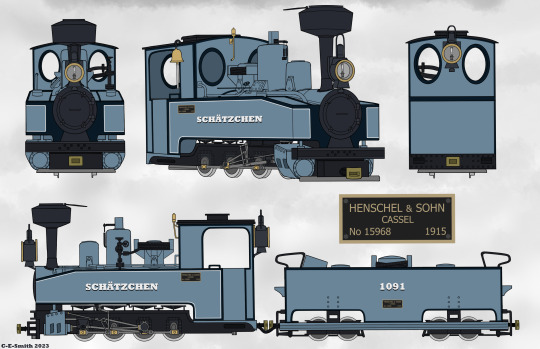#railway sectors
Text
@muszeresz @sztupy
28 notes
·
View notes
Text
"On Track to Progress: EIIR Trends Navigates the Dynamic Landscape of the Railway Sector"
Embark on a journey through the evolving railway sector with EIIR Trends. Our platform delves into the transformative trends and innovations propelling the railway industry forward. From advancements in high-speed rail technology to sustainable transportation initiatives, EIIR Trends Railway Sector provides a comprehensive view of the dynamic landscape.
Explore in-depth analyses covering infrastructure developments, rolling stock innovations, and digitalization trends shaping the future of rail transport. Whether you're a railway professional, industry stakeholder, or enthusiast, our curated content offers strategic insights into the forces driving progress within this crucial sector. Discover the intersection of technology, sustainability, and efficiency as the railway sector undergoes a profound transformation.
0 notes
Text
#Dermatologist in Gurgaon#Best Dermatologist in Gurgaon#Dermatologist in Sector 46 Gurgaon#Best Dermatologist in Sector 46 Gurgaon#Dermatologist in Old Railway Road Gurgaon#Best Dermatologist in Old Railway Road Gurgaon#pediatric doctor in gurgaon#child doctor in gurgaon#pediatrician in gurgaon
1 note
·
View note
Text
So when the government is asked for money for the teachers, the junior doctors, the consultants, the railway workers, the fire-brigade, the police, the paramedics and other public sectors we are repeatedly told "there is no more money available"
But when the government discovers there is a problem that might annoy parents -- in an election year no less -- they suddenly find "AS MUCH MONEY AS IT WILL TAKE" to fix it?
Curious that.
#dangerous schools#raac#tory government#public sector pay#junior doctors#consultants#railway unions#paramedics#tory#election year
1 note
·
View note
Text
#Bullet trains#high-speed#Japan's freight sector#perishable goods#fresh fruits#live seafood#high-speed rail tracks#local communities#food producers#railway operators#urban centers#COVID-19 pandemic#innovative solutions#seat sales#freight services#Hayabusa No. 72 train#Mutsu Bay#apple pies#cargo capacity#truck driver shortage#working hours#JR East#Hakobyun#seafood#vegetables#flowers#fresh sashimi#Yobuko squid#Karatsu#Saga Prefecture
1 note
·
View note
Text
Norfolk Southern freight train derails in Clark County, Ohio, prompting shelter-in-place order 'out of abundance of caution' | CNN
CNN
—
A Norfolk Southern freight train derailed in the Springfield, Ohio, area Saturday afternoon, prompting a shelter-in-place order for nearby residents – just one month after the company’s toxic train wreck on the other side of the state in East Palestine.
No injuries were reported Saturday and there was no hazmat situation at the crash site in Clark County, an Ohio State Highway Patrol…

View On WordPress
#2023 ohio train disaster#accidents#brand safety-nsf accidents and disasters#brand safety-nsf sensitive#Business#business and industry sectors#chemical industry and chemicals#chemicals and environment#companies#continents and regions#disasters and safety#domestic alerts#domestic-health and science#economy and trade#environment and natural resources#freight railway#freight transportation#iab-business and finance#iab-disasters#iab-environment#iab-industries#iab-logistics and transportation industry#iab-science#international alerts#international-health and science#midwestern united states#Norfolk Southern Corp.#north america#Ohio#rail transportation
0 notes
Text
Market this week 2-12-2022
Market this week 2-12-2022
Gains for Axis Bank come from lender assurances that the growth upswing can continue
Axis Bank’s stock increased on November 25 as a result of analysts’ positive reactions to the lender’s long-term outlook at the annual analyst day meeting on November 24.
According to the brokerage company ICICI Securities, the lender’s management proved its capacity to transfer “intent” into “action” in order…

View On WordPress
0 notes
Text
Sarkari Result, Latest Online Form
sarkariresult.it provides all the latest sarkari result 2022, sarkari results info, government Jobs, sarkari exam, rojgar result, online form, admit card in various govt Job sectors such as up police, ctet, up board results, railways.
#sarkariresult.it provides all the latest sarkari result 2022#sarkari results info#government Jobs#sarkari exam#rojgar result#online form#admit card in various govt Job sectors such as up police#ctet#up board results#railways.#Sarkari Result
0 notes
Text
ट्रेन में सफर करने वाले यात्रियों को मिली बड़ी राहत, रेलवे ने फिर शुरू की ये सुविधा, जानें डिटेल्स
ट्रेन में सफर करने वाले यात्रियों को मिली बड़ी राहत, रेलवे ने फिर शुरू की ये सुविधा, जानें डिटेल्स
Image Source : FILE
Indian Railways
Indian Railways: ट्रेन में सफर करने वाले यात्रियों को भारतीय रेलवे ने बड़ी राहत दी है। रेलवे ने वह व्यवस्था फिर से शुरू कर दी है जिससे यात्रियों को सामान्य श्रेणी के टिकट (जनरल टिकट) मिल सकेंगे। इस सुविधा से यात्री के पास अगर रिजर्वेशन नहीं है तो वह टिकट काउंटर से टिकट लेकर यात्रा कर सकता है। इसके अलावा रेलवे की इस सुविधा से यात्रियों को टिकट के किराए में 20…

View On WordPress
#Amritsar#general coach#Haridwar#indian railway enquiry#indian railways#indian railways booking#indian railways login#indian railways pnr#indian railways recruitment#indian railways seat availability#IRCTC#IRCTC Latest News#June 29#kanpur railway station#madhya pradesh#National Hindi News#railway enquir#railway industry#railway sector#Railways#Railways Ticket Price#reservation#reservation closed in general coach#rishikesh#Swadesh Darshan Special Train#Tour Package#train#Vaishnodevi
0 notes
Text
Vietnam aims to start building two high-speed railway lines linking its capital Hanoi with China before 2030, the Ministry of Planning and Investment said, another sign of a recent warming of ties between the two communist-ruled neighbours.
China is Vietnam’s largest trading partner and a vital source of imports for its manufacturing sector. The two countries are already connected via a system of highways and two railway lines that are old and need upgrading on the Vietnam side.
One of the planned high-speed lines would run from Vietnam’s port cities of Haiphong and Quang Ninh through Hanoi to Lao Cai province, which borders China’s Yunnan province, the ministry said in a statement released late on Tuesday.
The other would run from Hanoi to Lang Son province, which borders China’s Guangxi region, passing through an area densely populated with global manufacturing facilities, including some owned by Chinese investors.[...]
Earlier this month, Vietnam said it was seeking to learn from China to develop its first high-speed railway network and had sent its officials to work with Chinese railway companies.
A massive high-speed railway line linking capital Hanoi with business hub Ho Chi Minh City is also being planned in the country.

10 Apr 24
214 notes
·
View notes
Text
In another news, Polish farmers are now blocking all roads in the country. Ukraine's main infrastructure for delivering arms and aid - roads and railways through Poland - are blocked constantly, while Russians have finished their rail road from Russia to Donbas and have free run of all the roads on that side, of course🙃
Meanwhile, research shows that Ukrainian grain almost doesn't influence Polish grain prises (1st screenshot)
Also, when talking about someone taking advantages of their benefactors, Poland maybe wants to look in the mirror? (2nd screenshot - I bet Ukraine would be closer to the blue sector, if we were a EU member😉 )


#ukraine#poland#russian invasion#україна#укртумбочка#укртамблер#укртумба#russian invasion of ukraine
165 notes
·
View notes
Text
Members of an ethical hacking group called Dragon Sector, including Sergiusz Bazański and Michał Kowalczyk, were called upon by a train repair shop, Serwis Pojazdów Szynowych (SPS), to analyze train software in June 2022. SPS was desperate to figure out what was causing "mysterious failures" that shut down several vehicles owned by Polish train operator the Lower Silesian Railway, Polish infrastructure trade publication Rynek Kolejowy reported. At that point, the shortage of trains had already become "a serious problem" for carriers and passengers, as fewer available cars meant shorter trains and reduced rider capacity, Rynek Kolejowy reported.
Dragon Sector spent two months analyzing the software, finding that "the manufacturer's interference" led to "forced failures and to the fact that the trains did not start," and concluding that bricking the trains "was a deliberate action on Newag's part."
According to Dragon Sector, Newag entered code into the control systems of Impuls trains to stop them from operating if a GPS tracker indicated that the train was parked for several days at an independent repair shop.
The trains "were given the logic that they would not move if they were parked in a specific location in Poland, and these locations were the service hall of SPS and the halls of other similar companies in the industry," Dragon Sector's team alleged. "Even one of the SPS halls, which was still under construction, was included."
The code also allegedly bricked the train if "certain components had been replaced without a manufacturer-approved serial number," 404 Media reported. [...]
404 Media noted that Newag appeared to be following a common playbook in the right-to-repair world where manufacturers intimidate competitor repair shops with threatened lawsuits and unsubstantiated claims about safety risks of third-party repairs. So far, Dragon Sector does not appear intimidated, posting its success on YouTube and discussing its findings at Poland’s Oh My H@ck conference in Warsaw.
211 notes
·
View notes
Text
Yippee!! I’m finally done with this massive drawing! I am so happy to share with you all Schatzi’s complete ref sheet! Character information and lore dump under the art! Its going to be a lot to read but bear with me. I have a lot to share. Schatzi is my first “thomas oc” so he holds a special place in my heart. I have spent months researching Trench Railways, and I am so excited to finally get to publicize some details from this big project I am working on.


TW: War, and Death
Schätzchen (can be shortened to Schatzi) is a German trench engine. He was built in 1915 so the world has been at war for his entire life. Built for war, immediately sent to war. His personality has been shaped by the soldiers around him. He is brave, strong, and proud (but not vain). He understands how important his work is and gives it his all. He can be stubborn and pop-offish around his crew but holds his tongue around strangers. He is very gullible and naïve which is occasionally taken advantage of by people in his unit. He is considered a fellow soldier by his crew and the other soldiers in his regiment, and they treat him as such.
Schatzi did not start off with a name. In this “universe” as you may call it, trench locomotives usually are never named. They are known solely by their numbers. They are machines made for war, and just like a soldier is known by the serial number on his dogtags, so are the engines known only by the number on their plates. They are seen as expendable and nothing more. If an engine has a name it is because they did something heroic enough to become loved and valued by their unit. In a similar way we only know the names of war heroes, we only know the names of engines brave enough to sacrifice themselves for their humans. The rest are lost to time.
Schatzi understands the fragility of human life and puts himself in harms way to see that lives are saved. He earns his name after saving his injured crew, and a very overloaded train of soldiers retreating from the front. He suffers severe damage in the process and is written off as scrap. However, his crew, who see him as their family, protest and get word out to everyone he saved on that train. It sets their entire sector of the front ablaze. The commander of the region is informed that his soldiers are threatening mutiny if this one trench locomotive is sent for scrap. So, instead of scrapping No. 1091 the engine is saved by the officer’s pen. Once they learn that their engine has been saved, the soldiers go to rescue him and in their jubilation scribble out “Unser Schatz” (Our Treasure) on his tank with chalk. He is repaired, and his crew lovingly paint Schätzchen on his tanks because he has and always will be their little treasure.
Afterwards, he is adored by everyone. He is accepted by the soldiers as “one of them” and is addressed accordingly. They play jokes on him and tease him just as they would a comrade. He even gets the nickname “Scheissechen” (which is like calling him little shit) when he is taking them back to the front. A lot of “tough love.”
He does any job asked of him. He carries munitions, supplies, and troops to the front but the job he holds in the highest regard is serving as an ambulance. Derailment was very common on Trench Railways. Schatzi is a fully articulated locomotive which gives him an advantage over other engines. He can handle tight corners with ease which enables him to keep up a good pace while rushing to and from the front lines. However, the track was still incredibly rough, and he does derail on occasion. His biggest fear is derailment while pulling ambulance wagons. He knows how precious time is to injured patients and blames himself if someone dies enroute.
Another advantage he has is the ability to “hide” his face. Some trench locomotives have adapted and developed ways of protecting their faces from shrapnel and debris. In a sense they can choose to "hide" their face and appear like a normal engine while still having all the functions of a "living engine." He can still see and speak while faceless which he occasionally uses to play tricks on people.
He prefers the company of humans over engines. Once he was accepted as a fellow comrade he took an interest in how humans live and interact with each other. He enjoys listening to them talk about their families and loved ones. He even learns popular war songs and gets to share rations and drink beer with his crew on occasion. The war has caused him to suffer in his own right but, regardless of how difficult things are, he carries on through adversity and remains strong. Lives are counting on him and as long as there is someone in need he will continue to give it his all.
#tw war#tw death#ttte#ttte fanart#thomas the tank engine#thomas and friends#ttte oc art#ttte oc#ttte narrow gauge#trench locomotive#trench railway#trench engines#ww1trench#ww1train#ww1#ww1 au#ttte oc: schatzi
109 notes
·
View notes
Text
[C]olonial policies to monitor and restrict Indian cattle were coterminous with policies to monitor and restrict Indian humans. [...] [T]he ‘milk-line’ [...] has been said by [colonial] scholars since the nineteenth century to bisect the region. [...] [This] reified and naturalised what remains a contentious division between South and Southeast Asia along the western borders of Myanmar. [...] [D]enaturalise [...] this border by uncovering the colonial history of how milk became entangled in the immanent political geography of British Burma. [...] As part of imperial writings on the distinctiveness of the colony's cultural landscape, milk informed the imaginative geography of Burma as a place distinct from India. [...]
---
[T]he turn-of-the-century writings of colonial scholar officials and travel-writers [...] generated a particular imaginative geography [...]. These authors rendered Burma a ‘unique geographic entity’ [...]. Being unable to acquire milk whilst travelling Burma was a frequent gripe in imperial writings. In this it stood in contrast to the rest of British India. [...] Imperial writings on dairy consumption – or, rather, the lack of it – in Burma reified this geography [...]. Burma was where you could not get milk in British India. [...] But the difficulty of milk did not end with the cow. Once produced, the milk itself was liable to adulteration and infection necessitating state and scientific intervention. Limiting the mobility of dairy cattle and removing them from urban areas through policies designed to order and police space were central to colonial schemes for improving milk production [...]. By the twentieth century most of the dairy production in the colony was conducted by Indians who had migrated to Burma with their own cattle. [...]
The rendering of cattle as lively commodities in the milk industry was seen to be in tension with their commodification in a different economic sector, the rice industry.
This was overwhelmingly the most important part of Burma's colonial economy.
The late nineteenth century saw a rapid expansion of the deltaic rice frontier. By the opening decades of following century the Burma delta had become the largest rice producing region in the world. The importance of plough cattle was reflected in their market value, which doubled between the end of World War One and 1930. [...]
In particular, they worried that the bloodlines of the Burmese breed of oxen, apparently favoured by cultivators, were at risk. [...] Indian milch cattle were considered a particular threat. This imperial imperative to protect a so-called ‘Burmese’ breed of ox reified and naturalised Burma as a geographic entity, with Indian cattle figured as invasive.
These concerns were entangled with colonial policies regarding the human Indian population in the colony [...].
---
[There was] a growing recognition of the importance of [Burmese] cattle to the production of rice in the Burma delta. [...] The stocky, strong Burmese ox [...] was thought to be especially suited to labour in paddy fields [...]. Burma was imagined as being constituted of upland areas where cattle were bred and the southern deltaic region where they were worked [...]. This was an animal geography that was transgressed by mobile herds of milking cattle imported from India residing along the sides of waterways and in the railway towns [...]. Following the colony's transportation network, migrant Indian cattle penetrated the spaces [...] To many officials, by the start of World War One the existing measures for protecting Burmese plough cattle from the ‘evils’ of Indian milch cattle were deemed inadequate. The push for greater controls began in 1915 with an agricultural and cooperative conference held in Mandalay. [...] ]C]olonial officials came to frame Indian cattle as a problem breed. The conference was attended by over nine hundred people from across Burma, including [...] state officials. It unanimously agreed that action had to be taken to protect [Burmese] cattle from Indian cattle.
Their suggested course of action was three-pronged: taxation, prohibition and segregation. [...] Attitudes to Indian cattle in the colony were conterminous with attitudes to Indian people.
The interventions [in cattle segregation] [...] can be considered as part of a wider range of state controls placed on Indian migrants to Burma. The timing of these committees was synchronous with inquiries into the sanitary conditions that Indian workers travelled and lived in [...]. At the same time [...], the state introduced compulsory medical checks and vaccinations on human arrivals from the subcontinent. In addition, the concerns expressed by officials contributing to these reports on cattle in Burma were indicative of British officialdom's paternalistic attitude towards the Burmese people, viewing their role as protecting the Burmese from the Indian and Chinese populations. The administrative view of the colony, which by the turn of the century held it to be culturally distinct from India, was increasingly imagining it as a separate geo-political entity. Officials began planning for it to be separated from British India.
During the interwar years anti-Indian sentiments gained ground [...]. Indian migrants were figured by some as a threat [...]. There were a number of anti-Indian riots in the 1930s [...]. The 1935 Government of India Act was enacted in 1937 separating Burma from India [...].
---
Text by: Jonathan Saha. “Milk to Mandalay: dairy consumption, animal history and the political geography of colonial Burma.” Journal of Historical Geography Volume 54. October 2016. [Bold emphasis and some paragraph breaks/contractions added by me.]
55 notes
·
View notes
Text
It's been one month since a freight train carrying hazardous chemicals derailed in Ohio. Here's what's happened since | CNN
Feb. 3 — Around 8:12 p.m., sparks shoot out from underneath the Norfolk Southern freight train as it passes through Salem, Ohio, surveillance video shows.
Around 8:55 p.m., 38 of the train’s cars derail in East Palestine. The derailed equipment includes 11 tank cars carrying hazardous materials that ignited, fueling fires that damage another dozen cars, the National Transportation Safety Board…
View On WordPress
#2023 ohio train disaster#accidents#brand safety-nsf accidents and disasters#brand safety-nsf sensitive#Business#business and industry sectors#chemical industry and chemicals#chemicals and environment#continents and regions#disasters and safety#domestic alerts#domestic-health and science#economy and trade#environment and natural resources#freight railway#freight transportation#iab-business and finance#iab-disasters#iab-environment#iab-industries#iab-logistics and transportation industry#iab-science#international alerts#international-health and science#midwestern united states#north america#Ohio#rail transportation#the americas#toxic and hazardous substances
0 notes
Photo

On this day, 18 January 1977, workers and poor people across Egypt rose up against the ending of state subsidies for basic goods in what became known as the bread intifada. The cancellation of around LE277 million (approximately $55 million in 2020) subsidies, especially on food, along with pay cuts for public sector workers was announced the day before. On the morning of January 18, workers in factories around Cairo and Helwan began to walk out. In Shoubra el Kheima, some workers went on strike while others occupied their workplaces as well. Meanwhile students and civil servants marched on Parliament while protests spread across the country. Protesters cut railway lines and blockaded tracks, set fire to police stations, attacked hotels and wealthy districts, and the headquarters of the ruling Egypt Arab Socialist Party was set ablaze. Demonstrators braved violent security forces who were using live ammunition, and in some cases protesters seized weaponry from police stations. Despite the government killing around 800 people and injuring many more, within two days strikes and rioting had occurred in most industrial towns and cities across the country. The government was forced to back down and withdraw its plans after just 48 hours. Learn more about the history of the uprising in our podcast episodes 59-60: https://workingclasshistory.com/podcast/e59-60-the-bread-intifada/ https://www.facebook.com/workingclasshistory/photos/a.296224173896073/2188984491286689/?type=3
123 notes
·
View notes